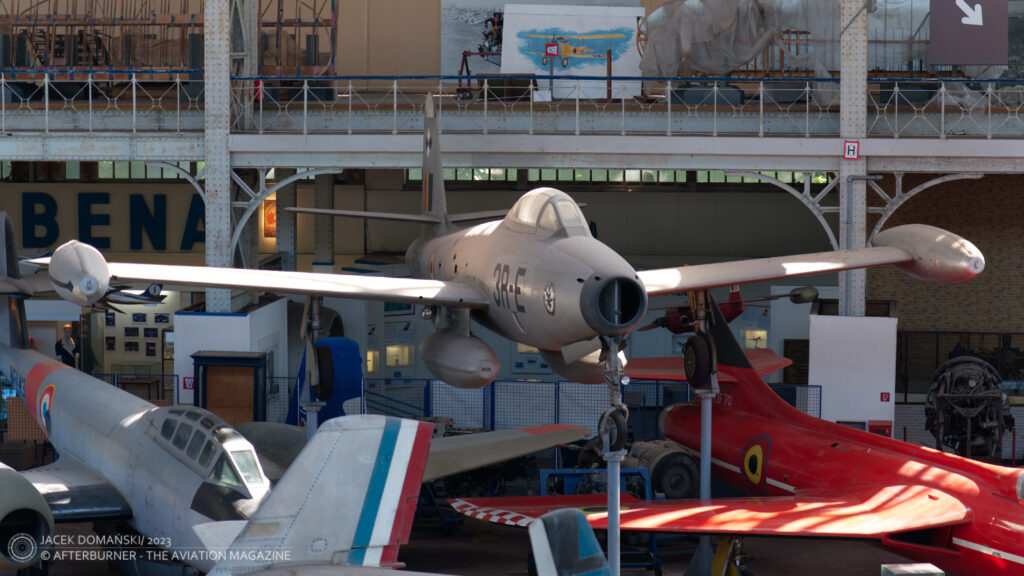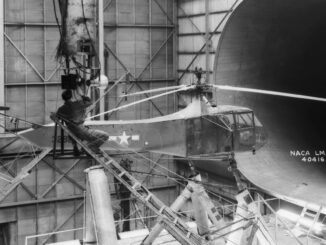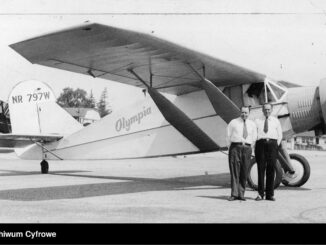 On 22nd September 1950, an F-84 Thunderjet flown by Col. David Schilling made the first non-stop crossing of the Atlantic by a jet aircraft.
On 22nd September 1950, an F-84 Thunderjet flown by Col. David Schilling made the first non-stop crossing of the Atlantic by a jet aircraft.
In 1948, the first ever crossing of the Atlantic Ocean by a jet aircraft was recorded. It was made by formation of six de Havilland Vampire F3 fighters of No. 54 Squadron of the Royal Air Force. The group was led by Wing Commander Wilson-MacDonald and flew from the United Kingdom to Montreal in three legs, via Stornoway, Iceland and Labrador. It took more than eight hours of flight for the Vampires to reach the North America.
Two years later, the time has come for the first attempt to complete that route in a non-stop flight.
The venture seemed to be possible thanks to new air-to-air refuelling system developed by a British company named Flight Refuelling Limited (currently Cobham Ltd.). It was the probe-and-drogue method they introduced in 1949 and then attracted attention of David Schilling, the commander of the 56th Fighter Group of the United States Air Force.
David Carl Schilling was born in 1918, in Leavenworth, Kansas. In 1939 he joined the US Army and became a cadet of the Air Corps. A year later, he joined the 56th FG and stayed with that unit until the end of the Second World War. At the end of the war, Schilling became the commander of the 56th FG, as well as a fighter ace with 22 ½ confirmed air victories.
Starting from 1948, Schilling was developing his project known as ´Fox Able´ (phonetic abbreviation for ´Fighter Atlantic´), focused on more efficient deployment of the USAF jet fighters to Europe. At that time, jet fighters were shipped to Europe by sea vessels, but Schilling was convinced that there is a possibility to fly them across the Atlantic. The probe-and-drogue system introduced by Flight Refuelling Ltd. was exactly what he was looking for.
On 22nd September 1950, the operation Fox Able Four was launched. Two Republic XF-84E Thunderjet fighters took-off from RAF Manston station, located in Kent, England. The aircraft, flown by Schilling and Col. William Ritchie, were equipped with the experimental refuelling probes developed by the aforementioned British company.
The first air-to-air refuelling took place over Scotland and the Thunderjets successfully received fuel from the Flight Refuelling air tanker, an Avro Lancaster bomber converted to that role.

The second rendezvous with a British tanker was planned to be executed near Iceland. This time, the aircraft deployed by the Flight Refuelling company was an Avro Lincoln, a development of the Lancaster, introduced into service in 1944. Both jets successfully completed its second refuelling procedure, but the probe on Ritchie´s Thunderjet was damaged.
During the third, and last, refuelling – performed over Labrador with the USAF B-29 bomber converted into KB-29 air tanker – it turned out that the damage on Ritchie´s jet makes it impossible to receive any fuel. Although there was no chance for the aircraft to reach any airfield, Col. William Ritchie managed to reach the land. The Fox Able Four formation was flying at more than 40,000 feet and, after running out of fuel, the Thunderjet could glide for a certain time, slowly losing its altitude.
Ritchie used that advantage in full, crossed the land, then ejected at 3,000 feet and successfully landed by parachute in a forest. Later calculations showed that he needed just a few more minutes of powered flight to reach the nearest airfield.
David Schilling continued the flight alone and successfully landed at the USAF air base in Limestone, Maine. The first non-stop transatlantic flight by a jet aircraft became a fact. The XF-84E needed 10 hours and 8 minutes, as well as three air-to-air refuellings, to reach the USA.
In recognition of his record flight, Col. David Schilling was awarded the Harmon Trophy. Within a year from his pioneering flight, Schilling repeated the flight but this time flying from the USA to the UK and leading a formation of Thunderjets. Only one aircraft from that group did not make it, although the failure was not related to air-to-air refuelling – due to engine issue, one of the F-84s exploded in mid-air, killing the pilot.
In 1952, David Schilling was transferred to the 31st Fighter Escort Wing in Georgia. There, he worked on non-stop transpacific flights, within the programme codenamed ´Fox Peter´. It featured the longest over-water flight attempted to that date, as well as the first transpacific flight performed by a formation of jet aircraft. For that part of his service, Col. David Schilling was awarded the Air Force Association Trophy.
On 14th August 1956, while serving as Inspector General in the UK, Col. David Schilling died in a car accident.

Cover photo: Schilling takes off from Hawaii in a F-84G, for one of his transpacific flights, 1952 (USAF photo, Public Domain). IWM photo used under Non-Commercial licence.



